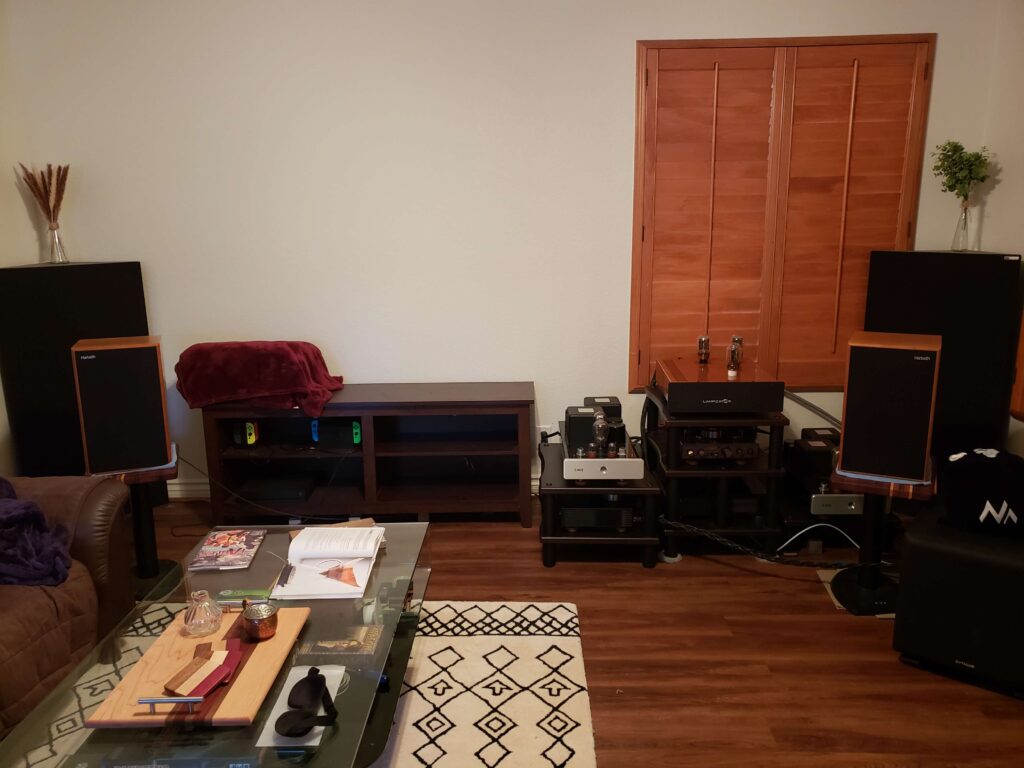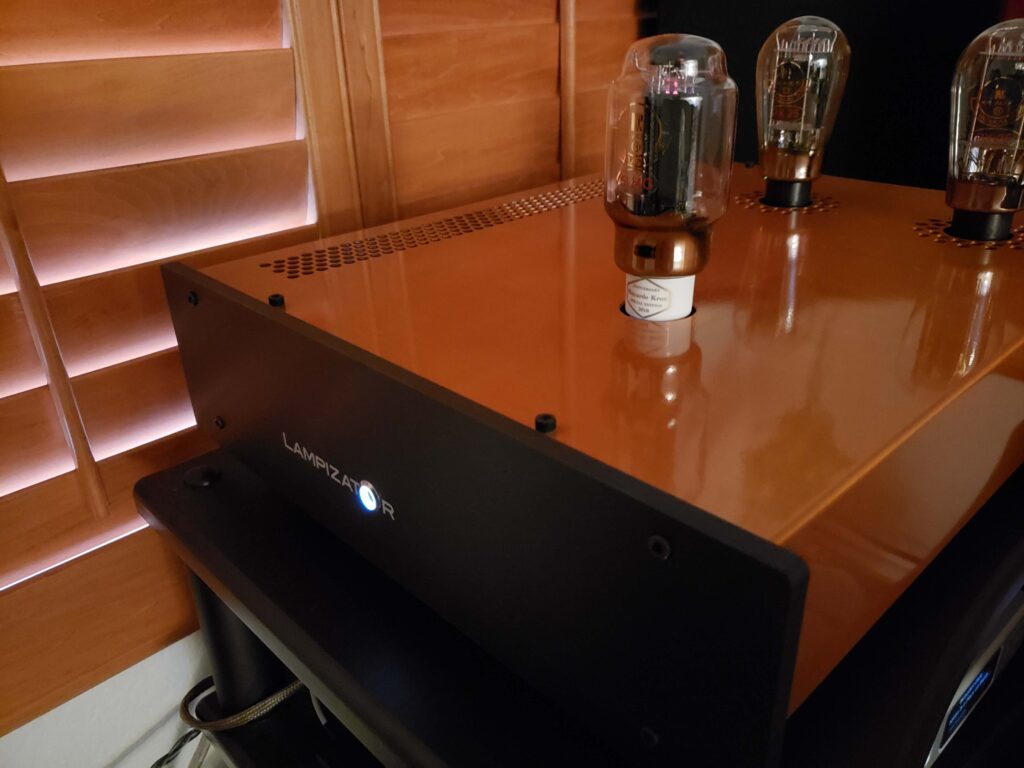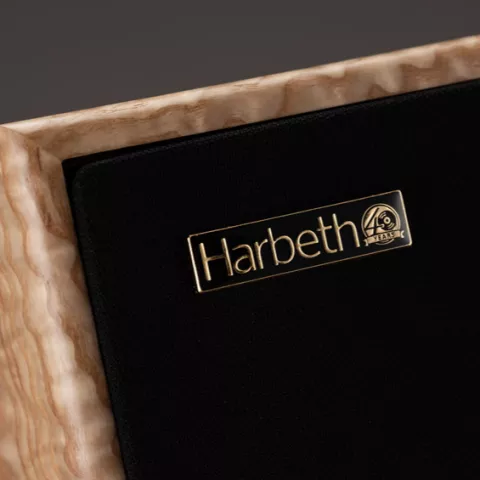“It almost sounds like a 2ch setup… 2ch is king… it sounds good, but I like my 2ch setup better.” Yes, this close-knit community knows me as one of a handful of speaker setup shills. Why? Does my system have more detail than headphone/IEM setups I’ve heard? No. Is it quicker? No. Better bass? No. Then why? It’s the presentation. All about the presentation. After a stressful day at work, I just want to put my feet up, close my eyes, and be transported to an individualized performance, just for me. Over the last two years, I have learned that presentation has been my highest priority and it’s difficult to replicate that compared to a speaker setup.

My first setup was a headphone setup. I had my beloved HD600 for 10 years and regrettably sold in one of my “speaker is king purges.” My intimate relationship and familiarity with this headphone conditioned me to love timbre, the first portion of my realistic presentation traits. My affinity to particular headphones such as ZMF Auteur, HE1000v2, and Susvara really made sense. It has the tone and timbre to “feel” like I am listening to instruments and vocalists in my room. At its peak, the presentation was unique and fun, but not what I was looking for; when I closed my eyes, I would imagine I was part of the band and the stage expanded outwards from me into infinity. It was cool. It was engaging, but not 2ch.
My second deviation were IEMs. It was a shock to me how well they perform and keep up with some headphones yet be portable. I was impressed enough to purge my entire headphone setup to go deep into IEMs. The detail retrieval you can get from IEMs is simply nuts, but this is when I learned about my second portion of realistic presentation, microdynamics and microdetail. The IEM that excelled with this is Rhapsodio Infinity MK2. This IEM let me texturize guitar strings, vibration of vocal cords, insert weird and gross phrases here. The point is this IEM went from big sound to abyssal black in microseconds. This led to a ton of room information, separation, texture, and engagement. I couldn’t listen to my setup while doing anything else; multitasking was hypothetically impossible.
The last piece of my discovery and what has locked in my obsession is the combination of my DAC and speaker upgrades. This last combination carries over that timbre, microdynamics, microdetail, but now adds imaging, depth, and room-filling stage presentation. My good friend Nick would say that he can “see” the music as he flutters his fingers in different directions. I have experienced aspirational headphone/IEM setups that do particular trait better, such as Susvara or 1266 on high-end electronics. Ultimately, a synergistic stereo setup has the ability carry over those traits from TOTL headphone and IEM setups and combines them into one; I don’t need the best of a trait, just the right mixture for the experience. With that being said, I can recline without placing anything on top of my head or jam into my ears and drift off into musical escapism.
My setup now consists of Roon – Antipodes CX/EX – LampizatOr Golden Gate R2R – Cary SLP-98 F1 – Cary CAD805AE – Harbeth 30.2XD. Cables are a combination of Audience, Danacable, and Final Touch Audio. Power is regenerated by PS Audio P5 Regenerator.
Here are some chronological notes on the amount of impact and characteristics each upgrade made for me – please consider synergy when it comes to impact. Impact cannot be objectively quantified:

Cary CAD805AE – I’ve always loved tubes. They provide a euphonic, lush, impactful, and musicality that I didn’t find with SS. This upgrade gave me a lot of fullness and meat to the music.
Cary SLP-98 F1 – This upgrade complemented my monoblock power amps. This added some fullness and lushness but complemented with some control.
PS Audio P5 Regenerator – This reduced any noise I may have had with my system and just made the background blacker. This also added to the dynamics and slam to my music.
LampizatOr Golden Gate R2R – This added a vast improvement to the presentation. The stage goes beyond my walls and adds a lot of depth. The instrument separation is more pronounced and is much more holographic. For a lame descriptor, it sounds like music is dancing around in space rather than coming from a direction.
Antipodes CX/EX server streamer combination – This was a huge improvement. I felt this was equivalent of another DAC upgrade. In fact, I noticed this upgrade in a shorter time than my DAC upgrade. Complementing my DAC, it enhanced the same presentation characteristics to further fool my brain into a performance. I would add that the two largest impacts on my system were the DAC and streamer.
Cables – Depending on the cable, it added engagement, texture, fullness, or coherency. Most of the cables complemented characteristics of my electronics that I liked. At this level, the differences were noticed quickly.
A short blurb about cables that made the most impact:
FTA Callisto USB – This cable made an immediate impact on my system (again, with synergy and level of detail-retrieval in mind). My friends and I can pick out traits within a few minutes. This cable fills in the midrange very well and gives it fullness and impact that wasn’t quite there before it. Fortunately, it doesn’t do anything wonky with the frequency range; it just complements the presentation aspect of the system.
Audience Au24 SE Speaker Cable – This cable made the second-most impact. Again, this kept the frequency range neutral, but it created a grandiose stage with improvements with imaging. It was exactly what I wanted in my speaker cable.
Danacable Diamond Reference 2 with Furutech FT-111 (R) connectors – Although I am listing this cable third, it still made an impact that I can recognize within the first few songs. This cable excels in what makes Danacable special, engagement. After I placed this cable into my system, I couldn’t stop tapping my toes, doing air guitar/drums, etc. Some people call it “PRaT” and this cable epitomizes that.
